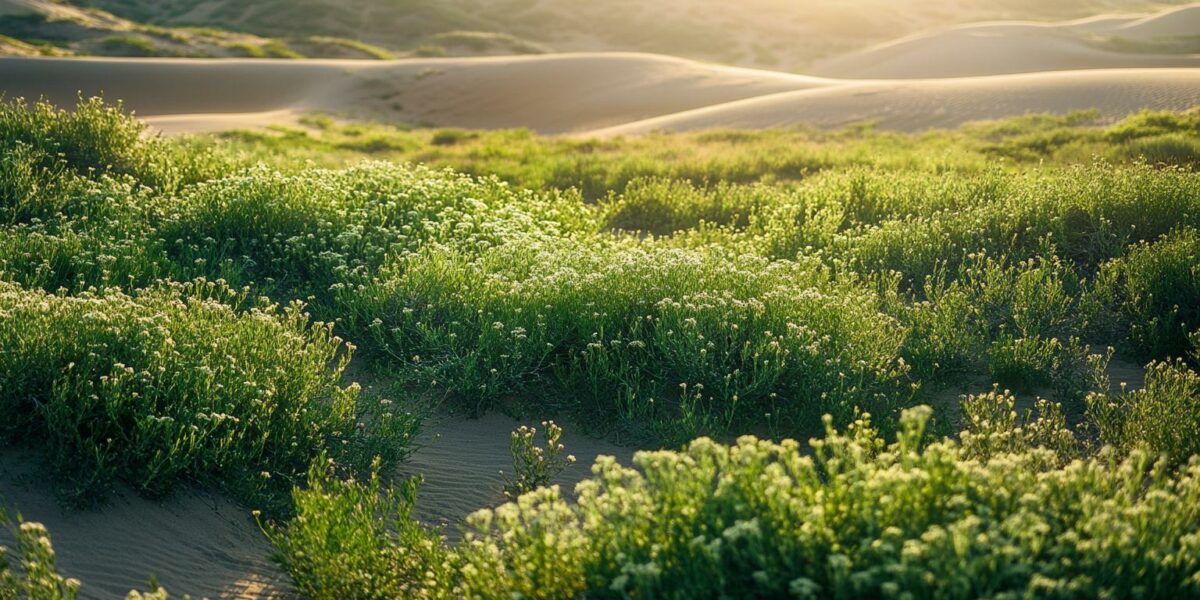Rising CO2 Levels and Unexpected Greening
Drylands around the globe, from the Sahel in Africa to western India, are experiencing unexpected greening despite increasing aridity. Experts attribute this phenomenon primarily to a 50-percent rise in atmospheric CO2 since preindustrial times, which enhances photosynthesis and allows plants to use water more efficiently.
The enhanced photosynthesis driven by higher CO2 levels enables vegetation to thrive even in arid conditions. This process allows plants to grow more robustly and faster, leading to a surprising expansion of greenery in regions once expected to desertify.
Increased CO2 in the atmosphere acts similarly to how farmers use CO2 in greenhouses to boost plant growth. This global atmospheric change is now affecting entire ecosystems, causing a significant transformation in dryland regions.
However, ecologists caution that this greening may have significant downsides for arid ecosystems. Native plants and animals uniquely adapted to these harsh environments could be losing out to the expanding vegetation.
Global Studies and Their Revelations
Several studies have documented this surprising trend. A 2021 study at the University of California, Berkeley found a 12 percent increase in photosynthesis since 1982, primarily due to CO2 fertilization. This finding aligns with earlier research that identified similar trends.
Remote-sensing specialist Ranga Myneni of Boston University noted that between 25 and 50 percent of the planet’s vegetated areas had shown an increase in their leaf area index since 1980. This suggests widespread greening driven largely by CO2 fertilization.
Researchers have identified several key contributors to this greening phenomenon:
- CO2 fertilization
- Improved land-use management
- Localized changes in rainfall patterns
While these factors contribute to the observed greening, scientists warn that the long-term implications could be complex and multifaceted, affecting both ecosystems and human populations.
Human Activities and Land Management
Human activities also play a significant role in this greening trend. For instance, farmers in arid regions like India and Niger have adopted practices that enhance vegetation growth, such as irrigation and tree nurturing.
In Niger, farmers have regenerated millions of trees on previously barren land, contributing to significant greening. Such practices demonstrate that effective land management can have a profound impact on local ecosystems.
However, this increased vegetation can lead to unintended consequences. For example, the greening of agricultural fields through irrigation can deplete scarce water resources and disrupt local ecosystems, leading to further environmental challenges.
Ecologists emphasize the need for balanced and sustainable land management practices to mitigate potential negative impacts of this greening trend.
Future Implications and Ecological Concerns
The unexpected greening of drylands has far-reaching implications. On one hand, it offers a potential buffer against climate change by increasing carbon sequestration. On the other hand, it poses risks to native species and ecosystems adapted to arid conditions.
Increased vegetation in arid regions can also heighten the risk of bushfires, as seen in southeast Australia. These fires are fueled by an accumulation of combustible woody vegetation, exacerbated by CO2 fertilization.
While the greening trend challenges previous predictions of widespread desertification, experts warn that it should not be viewed as a comprehensive solution to climate challenges. It is essential to consider the complex ecological dynamics at play.
The world must approach this phenomenon with caution, balancing the benefits of increased vegetation with the need to protect vulnerable ecosystems and ensure sustainable land-use practices for the future.



ElianaWhisper
How do we balance the benefits of greening with the risks to native species?
Valeria
Thanks for the update! This definitely changes how I view desertification. 🌿
jaydenwhisperer
I’m skeptical. Could these findings be biased? Just asking!
emilyradiant
Wait, is this greening trend permanent or could it reverse? Anyone know?
Aubrey_Oasis
Great read! Thanks for sharing such detailed info on global greening.
faithphoenix
Does this mean we should embrace higher CO2 levels, or are there hidden dangers?
arianaaurora
It’s amazing how CO2 can both harm and help the environment. Nature is full of surprises!
Theodore7
So interesting! What are the potential downsides for local wildlife? 🤔
jackson_unity6
Wow, this is incredible! Could greening actually help mitigate some effects of climate change?